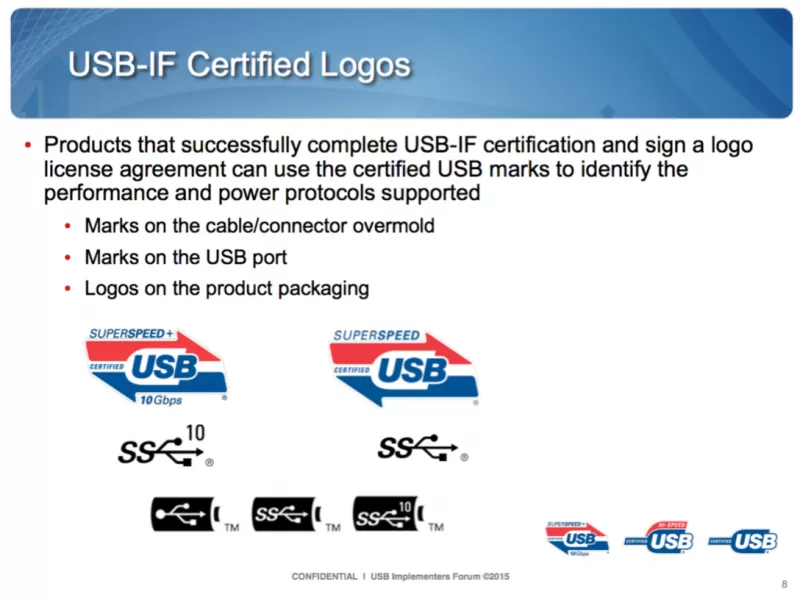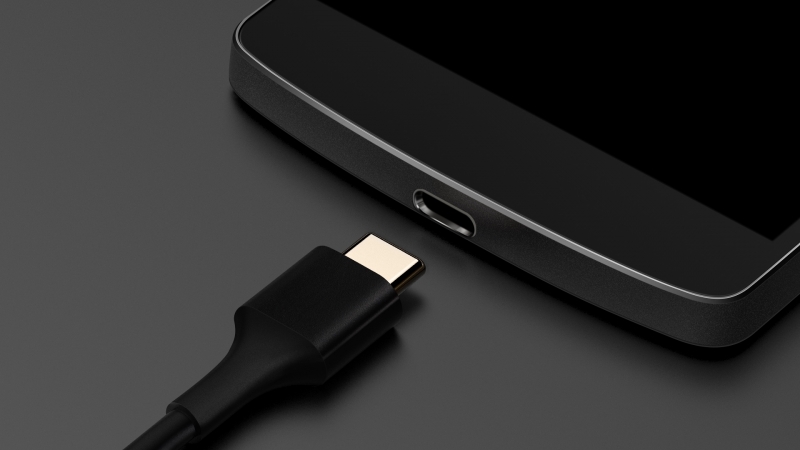The USB Type-C specification is pretty confusing. The versatile and reversible port can be used to carry USB 3.1, USB 3.0, and USB 2.0, as well as power through the USB Power Delivery spec, DisplayPort, and even Thunderbolt, depending on the Type-C port in question.
The confusion arises because some Type-C ports support all of these features, while some only support a subset, making it hard for a user to determine the capabilities of a particular port. The USB-IF, responsible for the promotion of the USB standard, is aware of the potential for confusion and are working on a solution.
Speaking to Ars Technica at Intel's Developer Forum last week, the USB-IF said they would be introducing a bunch of new logos that will help make each Type-C port less confusing. These logos could be stamped next to the USB ports on a particular device to help display the port's capabilities.

The new logos are as follows:
- The standard USB logo to identify USB 2.0 ports or slower.
- "SS" markings, which stand for SuperSpeed, to identify USB 3.0 ports, otherwise known as USB 3.1 gen 1.
- "10" markings, which stand for 10 Gbps, to identify USB 3.1 gen 2 ports with ultra-fast connectivity.
- A battery imprinted behind the appropriate USB logo to indicate the port supports USB Power Delivery.
The USB-IF already has a certified collection of logos that you've probably seen next to USB ports, on cables, or on product packaging, so these new logos will complement the existing set. The new USB logos can also be used alongside logos for other specifications, such as DisplayPort and Thunderbolt, if the particular Type-C port in question also supports these standards.
However, as these logos are completely optional additions, there's no guarantee that a device maker will include them on their products. For these situations, the USB-IF is hoping that companies make it clear what their products' USB Type-C ports are capable of to avoid any confusion.
If companies want to include these markings on their devices, they'll have to license them from the USB-IF, although licensing is already included in the $4,000 per-year fee for members. For companies that don't want to pay the yearly license fee, a standalone $5,000 license is available.
